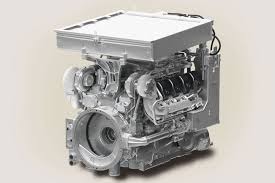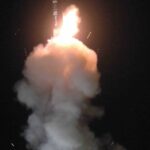
MTU, acquired by Rolls-Royce, has proposed its 8V199 engine for India’s new 25-30-tonne Zorawar light tank, being developed by L&T and the DRDO
By Vikas Gupta
New Delhi, 9 July, 2024
To conform to India’s Make in India and Atmanirbhar Bharat initiatives, a growing number of aerospace and defence original equipment manufacturers like Rolls-Royce are establishing defence production facilities in India.
Whether providing combat aircraft engines, marine propulsion solutions, or engines for India’s new light tank (LT), Rolls-Royce has actively engaged, offering a portfolio of engines across all combat domains — underwater, surface, land, and air.
Marine propulsion
“In India, our MTU engines power numerous Navy vessels and over 80 per cent of the Coast Guard fleet,” says Alex Zino, future programmes chief at Rolls-Royce.
Rolls-Royce is also proposing an all-electric drive for the Indian Navy’s second indigenous aircraft carrier (IAC-2), planned at Cochin Shipyard.
The power solution for the 65,000-tonne IAC-2 is based on Rolls-Royce’s MT-30 marine gas turbines, which provide all-electric drive to both the Royal Navy’s 65,000-tonne aircraft carriers, HMS Queen Elizabeth and HMS Prince of Wales.
Zino describes the MT-30 as one of the world’s most power-dense engines, capable of generating up to 43 megawatt of power.
“As power demands rise from mission systems, directed energy weapons, and rail guns, we believe this capability is well-suited for future ship generations worldwide. So, the MT-30, along with its full package and potential generator for a fully integrated electrical system, is the piece we’re working to provide,” says Zino.
Zorawar LT
Rolls-Royce subsidiarycMTU, acquired by Rolls-Royce Power Systems, has proposed its MTU 8V199 engine for India’s new 25-30-tonne Zorawar LT, currently under development by the Defence Research and Development Organisation (DRDO) for deployment in high-altitude battlegrounds like Eastern Ladakh, where the Indian Army faces Chinese armour.
Zino draws attention to the collaboration between Rolls-Royce and the defence public sector shipyard, Garden Reach Shipbuilders & Engineers (GRSE), dating back to 1986 for assembly and testing of MTU engines from Series 396, 538, and 4000 in Ranchi.
In line with the government’s objective to produce higher-power engines in India, Rolls-Royce has signed an agreement with GRSE for the production and localisation of the MTU Series 4000 governmental marine engine.
Jaguar engine
On the combat aircraft front, Rolls-Royce continues to support existing Indian Air Force (IAF) fighters equipped with Rolls-Royce engines.
In 1956, Hindustan Aeronautics (HAL) began a 50-year partnership with Rolls-Royce to manufacture the Orpheus engine. The IAF began inducting the Jaguar deep penetration strike aircraft in 1981, powered by the Rolls-Royce Adour 804/811 engine.
Over half a century, Rolls-Royce has collaborated closely with HAL to keep the Adour 804/811 in service. There is still a proposal to overhaul the Adour engines to keep a proportion of the Jaguar fleet flying.
“On the air side, it’s about supporting the existing fleet. We await the IAF’s decision on the Jaguar and how long they want to fly that. We stand ready to support whatever decision they make,” affirms Zino.
In the 2000s, HAL began manufacturing the Hawk advanced jet trainer, as well as the Rolls-Royce Adour 871 engines that powered it.
Presently, some 750 Rolls-Royce engines power aircraft in service with the IAF, Indian Navy, and HAL.
Rolls-Royce now is ready to deepen its partnership with India by designing and developing aero engines in partnership with Indian entities.
“We want to develop intellectual property (IP) in India,” asserts Zino.
Highlighting the rarity of this capability globally, Zino says, “We have certified one new engine roughly every 18 months over the past decade.”
“We are working very closely with DRDO to propose solutions that transfer capabilities to India, develop IP, know-how, and manufacturing in India for India for national security, and in time for export,” adds Zino.






